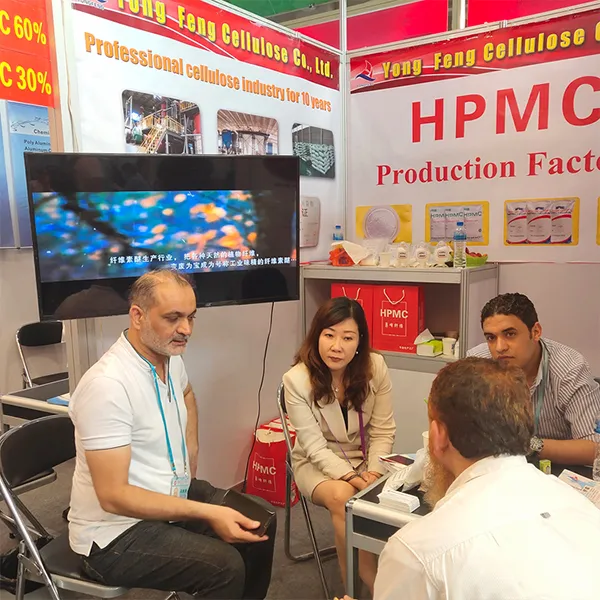HPMC Ether Understanding Its Properties and Applications
Hydroxypropyl Methylcellulose (HPMC) ether is a widely used cellulose ether known for its versatile properties and numerous applications across various industries. HPMC is derived from cellulose, a natural polymer obtained from plant cell walls. It is modified through a series of chemical processes, incorporating hydroxypropyl and methyl functional groups, which endow it with unique characteristics. This article aims to delve into the properties, benefits, and applications of HPMC ether in different sectors.
One of the most significant properties of HPMC ether is its ability to dissolve in water and form viscous solutions. This solubility allows for easy formulation in various products. HPMC has excellent water-retention capabilities, making it an effective ingredient in building materials such as cement-based mortars and plasters. This property helps to improve workability and prolong the open time of these materials, ensuring that they can be applied effectively without drying too quickly.
HPMC Ether Understanding Its Properties and Applications
In the realm of personal care products, HPMC ether serves various roles. It is commonly used as a thickening agent in creams and lotions, providing the desired consistency and enhancing the sensory feel of products. Additionally, its ability to stabilize emulsions allows for the formulation of diverse cosmetic products, ranging from moisturizers to serums.
hpmc ether

In the food industry, HPMC ether is recognized for its food-grade properties, making it suitable for use as a thickening and stabilizing agent in sauces, dressings, and dairy products. HPMC contributes to the enhancement of texture and mouthfeel, ensuring that consumers enjoy a consistent and appealing product. Moreover, its ability to retain moisture is advantageous for reducing food spoilage and improving shelf life.
The construction sector has seen substantial adoption of HPMC ether in recent years. Its function as a water-retaining agent is crucial in cementitious compositions, where it aids in the process of hydration. HPMC helps to improve adhesion properties, making it essential for tile adhesives, grouts, and other construction materials. Furthermore, its thickening properties enable the production of a viscous paste that can be easily applied, enhancing the overall efficiency of construction processes.
HPMC ether is also environmentally friendly, being derived from renewable cellulose sources. This characteristic aligns with the growing trend towards sustainability in various industries, as manufacturers and consumers alike seek products that minimize their ecological footprint. The use of HPMC in formulations not only meets performance standards but also supports initiatives aimed at reducing environmental impacts.
In conclusion, Hydroxypropyl Methylcellulose ether stands out as a multifunctional ingredient with a broad range of applications across multiple industries, including pharmaceuticals, food, personal care, and construction. Its solubility, film-forming ability, and water retention properties contribute significantly to product performance and consumer satisfaction. As industries continue to explore innovative formulations and eco-friendly solutions, HPMC ether will undoubtedly remain a key player in the development of new and improved products.
-
Premium Detergent Grade HPMC Hydroxypropyl Methylcellulose: Superior Thickening & StabilityNewsAug.31,2025
-
HEC 100000 Hydroxyethylcellulose for Paint | Superior ThickeningNewsAug.30,2025
-
Wall Putty Rdp Powder Packaging DesignNewsAug.29,2025
-
Introduction to Hpmc Hydroxypropyl Methyl CellulosNewsAug.29,2025
-
Hpmc Industri Grade IntegrationNewsAug.29,2025
-
How to Choose the Right Construction AdhesiveNewsAug.29,2025




